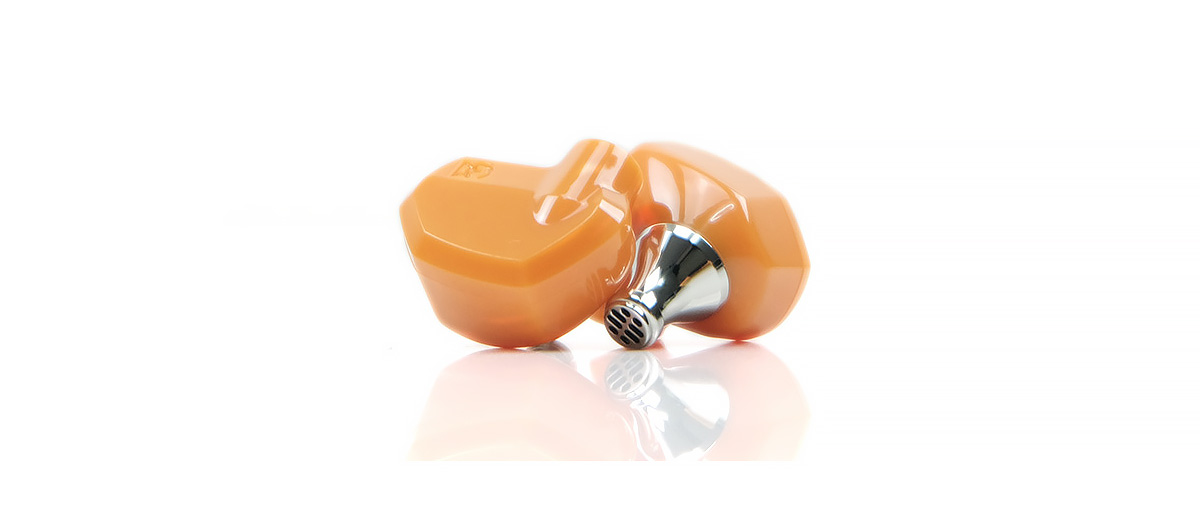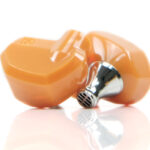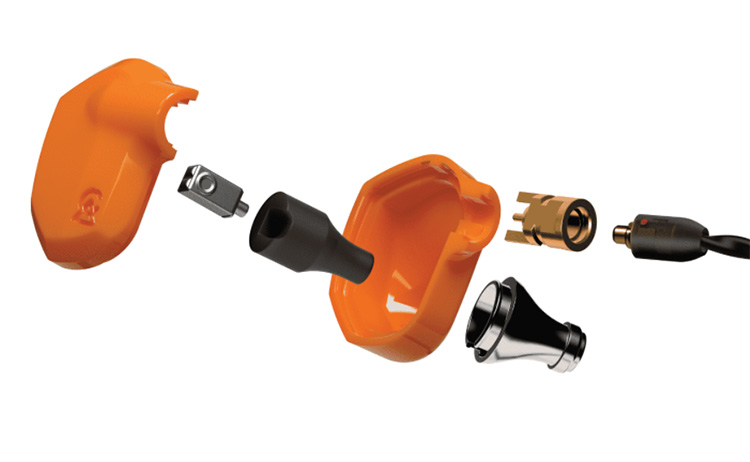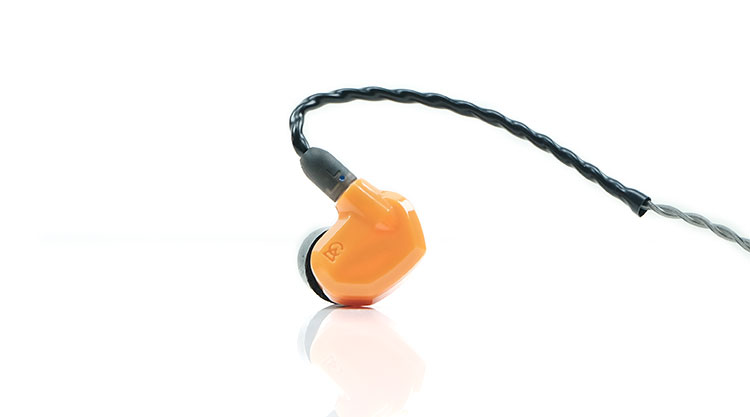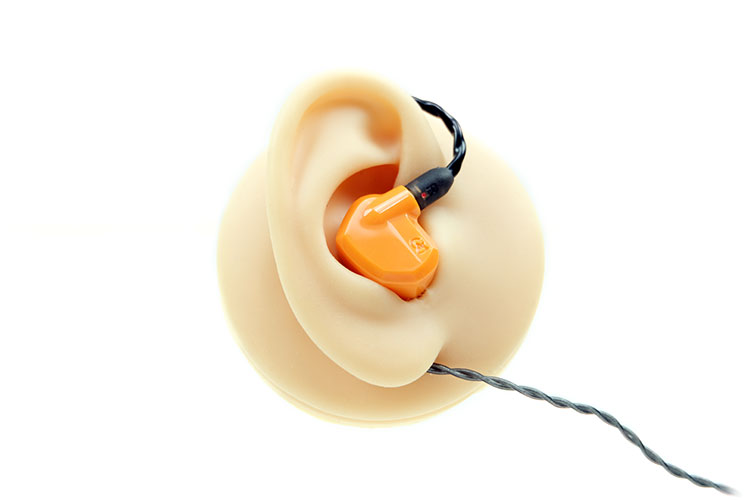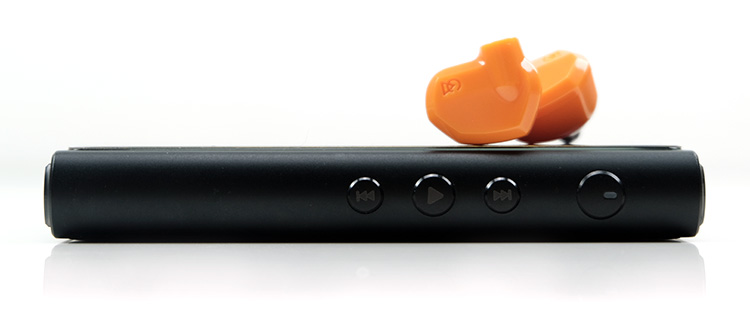The Campfire Audio Satsuma is a new entry-level universal ABS-bodied IEM featuring a single balanced armature implementation. It is priced at $199.
Disclaimer: The Campfire Audio Satsuma sent to us is a sample in exchange for our honest opinion in this review. We thank the team at Campfire Audio for giving us this opportunity.
To read more about Campfire Audio products we reviewed on Headfonics click here.
Note, this 2-page review follows our new scoring guidelines for 2020 which you can read up on here.
The Satsuma is the second of the two ‘summery’ themed entry-level universal monitored releases from Campfire Audio. This will be quite a contrast to the Honeydew which we reviewed a few weeks ago despite it sharing many similar external features and a price point not too far off at $199.
With a similar single BA implementation, some might wonder if the Satsuma is the natural successor to the now discontinued Comet or perhaps even the more expensive Orion a few years earlier. In short, no it is not, it has its own entirely different sound signature and looks.
However, I actually thought the similarly-priced Comet was a very good single driver implementation back in 2018 so the Satsuma might have some big shoes to fill in 2021 as the flag bearer for BA entry-level IEMs in the Campfire Audio lineup.
Tech Highlights
Driver Configuration
The Satsuma is a single balanced armature driver universal monitor but I believe a different driver to the one previously used in the Comet and Orion. We now have a full-range ported BA which is a bit similar to a vented version and generally helps with improvements in the staging and bass response.
Technically, they are less efficient drivers and require more power than solid enclosures to sound effective on their own. It is no surprise to me that the specs that the Satsuma reflect that with a more demanding load and lower SPL compared to its dynamic driver sibling, the Honeydew, at 46.4Ω and 67 mVrms to hit 94dB SPL @ 1kHz.
You will definitely need a bit more juice to drive the Satsuma compared to their current line-up and you read more about that under our synergy section on page 2.
3D Printed Acoustic Chamber & T.E.A.C.
As with the Honeydew, the Satsuma also gets an individually designed 3D internal acoustic chamber to help optimize the balanced armature’s airflow and in doing so maximize its ported design.
Correct acoustic chamber airflow performance has added significance here due to the implementation of T.E.A.C technology inside the Satsuma similar to the previous Comet design.
T.E.A.C. is a tubeless acoustic chamber designed to basically let the treble breathe more than any tube system you get with traditional BA designs. Single BA designs are often known to be all about the mids because it is tricky to get a single BA to competently cover the entire frequency range.
Usually, there is a degree of roll-off on one end or the other, or both. Campfire’s pitch is that this is not going to happen, or at least as much, with the Comet. You should get better treble clarity as a result.
Design
This time with a new color scheme in keeping with summer freshness entitled “orange fizz”. No surprise then the finishing has a singular color tone with only the stainless-steel spout and MMCX connectors interrupting that flow of orangeness.
As with the Honeydew, CA has gone with an ABS injection-molded version of the original edged zirconium blasted aluminum shell from the likes of Andromeda. The dimensions have been noticeably reduced from their flagship siblings so the form factor and feel are identical to the Honeydew save for some reduced weight due to the smaller driver inside.
The ABS finishing is also very smooth so the edging is more for aesthetics and not something that will dig into your ear or hands when in use. Suffice to safe it is a very smoothly curved monitor.
The Satsuma also uses CA’s classic custom beryllium/copper MMCX connectors as well as the miniaturized version of their new and excellent fitting stainless-steel spout first seen on the Honeydew.
Stock Cable
Both the Satsuma and the Honeydew use the new 1.32m Smoky Lite Edition stock cable which is a slightly streamlined version of their “smokey” SPC Litz 4-wire design used on higher-end models.
There is not a huge difference between the Lite and the original version in terms of dimensions or even a change in the barrel designs. It still uses a low-profile black aluminum splitter barrel with a matching chin cinch that articulates quite easily and stays in place.
The most noticeable change is the memory coating which seems a lot more discreet and lighter. On the original Smoky cable, the memory coating is translucent and a lot thicker whereas the new version is thinner with a black coating. That does mean it is a little firmer to the touch but the weight reduction is tangible.
The Satsuma version also retains CA’s right angle 3.5mm gold-plated 3.5mm TRS jack in a very durable high-density rubber enclosure as well as the gen 2 custom beryllium/copper MMCX round connectors. As remarked in the Honeydew review, the barrel coating finish on the connectors is a shade darker compared to the original Smoky Litz version.
As for handling, the microphonics levels are every bit as low as the non-Lite edition and retains the original’s lightweight and memory retention-free handling experience.
Comfort & Isolation
Like the Honeydew, the Satsuma is equally a comfortable fit but the isolations levels are largely the same using the foam tips despite the Honeydew being vented.
Certainly, that new smaller form factor combined with the soft ABS curves on the shells helps a lot in terms of comfort. Not to mention also the smaller stainless-steel spout allows more room for the foams to dig in a bit deeper than the full-size version.
In our test ear mold, the Satsuma shell has plenty of workable space and is not pressing too much on the cartilage around the concha basin. The only real touching points, like the Honeydew, are where the cable meets the top and the back of the ear. The cable weight is light enough not to dig in on those particular touchpoints to create any discomfort.
Tips Performance
Isolation seems to be quite tip-dependent with the Satsuma so as mentioned, the foams were just average. The depth of the spout is good with the foam tips so no comfort issues but they seem to lose the ventless shell advantage over the vented Honeywell design with some low Hz rumble still apparent from my aircon 2 meters away.
However, the performance can be improved substantially with the excellent supplied Final E Tips. With these fitted into the Satsuma, they hammer down on a lot more low Hz background noise and edge it over the Honeywell for me in terms of good isolation.
I am not a fan of the generic silicone single bore tips they also included. They do nothing for my ears in terms of isolation and as a consequence, the performance is very poor with tons of leakage.
Packaging & Accessories
The Satsuma packaging and accessories continue with that summery theme of the Honeydew but this time with more of a lime green carry case and a more saturated orange tone for the accessory box.
The outer USA Made “French Paper Company” packaging retains the boxer dimensions of its predecessors but again the orange Satsuma driver shell front and center.
The box’s aqua green color shading is just mildly washed out compared to the Honeydew version’s stronger lime green. It makes me wonder if it would have been more apt if they swapped the boxes around so the Satsuma carry case would better fit the color of the box.
The even more compact case is the same Portuguese-made zipper and canvas material with that wonderfully faux-lined inner as the Honeydew. What has changed is a new color scheme, this time it is called “Leafy Green”.
Inside you get the following accessories all neatly packages in their twin cushioned mesh draw-string pouches:
- Final e-tips (xs/s/m/l/xl)
- Foam Marshmallow tips S/M/L
- Silicone single-bore tips S/M/L
- 3 x cushioned pockets (for the monitors and foam tips)
- Cleaning brush/pick
- New canvas Leafy Green carry case
- Campfire Audio pin badge
Sound Impressions
Summary
The Satsuma is quite a contrast from the bombastic presentation of the Honeydew. Given that it is using a single BA it should come as no surprise that there is more delicacy and speed than outright power and vastness in its performance.
As you might expect, there is a fair degree of mid-forwardness from the Satsuma. However, this is not a pristine shimmery tonal sound signature, there is enough warmth and texture to set it apart from the more traditional colder colorations of some of its single driver competitors.
I should state also before we go into more detail that the choice of tips does have a fairly pronounced effect with the foams the least impressive in terms of clarity. The Final E Tips introduce a lot more treble resolution and a more pronounced mid-bass tempo though at the cost of a little bit of steeliness in the upper mids.
The final caveat is your source which also had a big influence on Satsuma’s performance. With the Honeydew I went with a clean-sounding DAP or dongle such as the DX160 which, in turn, sounds too bright with the Satsuma.
This time the likes of the HiBy R5 and the Cayin N3Pro were far better matches producing a smoother sounding and better bass weight.
Frequency Response
CA has kept the FR below 1k reasonably flat on the Satsuma save for a little bit of mid-bass punch and warmth which I would consider a welcome tweak. Coming from the Honeydew you might think ‘very neutral’ but in reality, when compared to something like the ARC Pollux‘s razer flat 20Hz to 1k it has more of a gentle lift.
There is a very minor dip into the mids but nothing substantial so the transition into the lower mids is actually quite smooth. Beyond that is the Satsuma’s most prominent tonal characteristic, a fairly substantial 1-3k rise which pushes forward some higher pitching vocals fairly strongly.
Not quite the full glory of the upper-mids for me with the 4k-6k region dipping to quell some energy from a secondary 7-8k peak. However, you do get some of that treble energy creeping into the mids instrumental and vocal overtones.
Treble extension is pretty good but not earth-shattering. It does steer the Satsuma away from an ethereal thin tone and at the same time creating some improved midrange spaciousness from the likes of the qdc Neptune.
Timbre
The Satsuma is more about the speed of the punch with a bit of warmth than outright power. It is not quite as intensive on the very low-end as the weightier Neptune but it can deliver more welcome warmth and body compared to ARC’s razor flat Pollux.
The lowest pitching instrumental timbre has just enough of a fundamental to anchor the performance but the overriding opinion is a tight bass and articulate delivery with a shorter decay than its dynamic driver sibling, the Honeydew. For those looking for a bass timbre that is low on bloom and doesn’t overpower the midrange then the Satsuma is the better choice.
Mids timbre is a bit of a mix of warm and smooth up to that big bump around 2-3k and then neutral to slightly bright higher pitching voicing and percussion timbre. You do get a bit more of an odd-harmonic overtone on female vocals and snare and cymbal crashes but it’s not overly thin or brittle sounding.
Again, watch that source matching with the Satsuma’s mids coloration. A bright DAP will thin it out and squeeze that boosted mid-range deliver too much harmonic dissonance creating a very metallic sound. Keep the source amp or DAP to the warm and rich side and the Satsuma mids timbre sounds a lot sweeter and more natural sounding for my tastes.
Staging
The Satsuma is more about fidelity and control within a mid-forward staging presentation. What I mean by that is it’s not huge but the articulated imaging and the ability to push out a nice level of clarity throughout are done very well indeed.
This is not a diffuse mushy soundstage with artificially dipped mids to create a sense of ‘faux space’. Rather, it is a stretched midrange, vocals to the fore and instruments slightly behind delivering some surprisingly good stereo separation. Though not as tall as some of its competitors there is a decent level of air and enough headroom for those mids to properly breathe as well.
Depth is on the neutral side but not as shallow as I was expecting. The sub-bass amplitude is subdued so it is not going to sound the most planted and powerful of presentations but neither is it as flat as a pancake. The punch and warmth are there, just not overcooked.
Click on Page 2 for sound impressions and select comparisons




